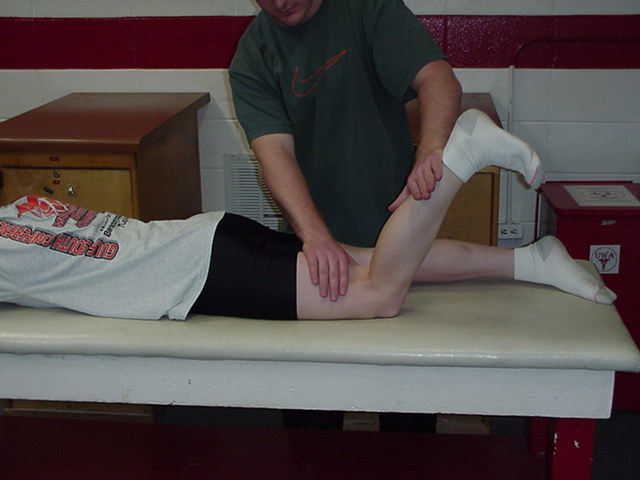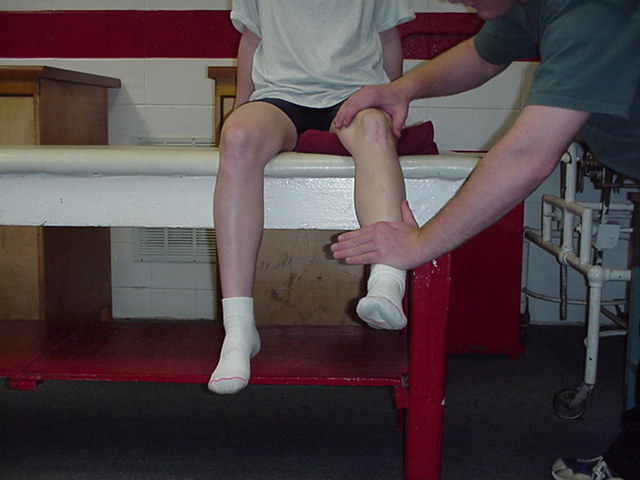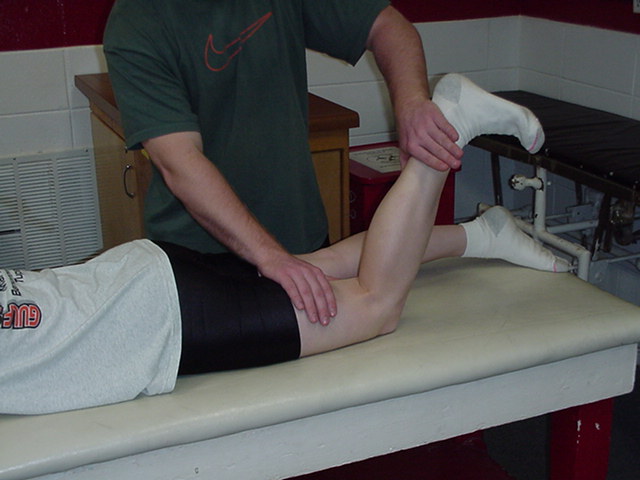| Knee Flexion |
The patient is
prone with legs straight and toes hanging over the edge of the table. The
therapist stands next to the test leg. The therapist places one hand on
the posterior thigh and the other hand applies resistance at the distal
calf or just above the ankle. The resistance is applied in downward
direction as the patient actively flexes the knee. |
 |
| Knee Extension |
The patient is
short sitting, place a wedge or pad under the distal thigh to maintain the
femur in the horizontal position. The therapist stands at the side of the
leg being tested. The hand giving resistance is contoured over the
anterior surface of the distal leg just above the ankle. Resistance is
applied in a downward direction as the patient actively extends the knee. |
 |
| Knee Flexion with
External Rotation |
Patient is prone
with knee flexed to less than 90 degrees and the leg in external rotation.
Therapist stabilizes the thigh with one hand and gives downward and inward
resistance at the ankle with the other hand. Patient flexes the knee,
maintaining the leg in external rotation. |
 |
| Knee Flexion with
Internal Rotation |
Patient is prone
with knee flexed to less than 90 degrees and the leg in internal rotation.
Therapist stabilizes the thigh with one hand and gives downward and
outward resistance at the ankle with the other hand. Patient flexes the
knee, maintaining the leg in internal rotation. |
 |
Hislop, Helen J. & Montgomery, Jaqueline with
contributor Barbara Connelly.



